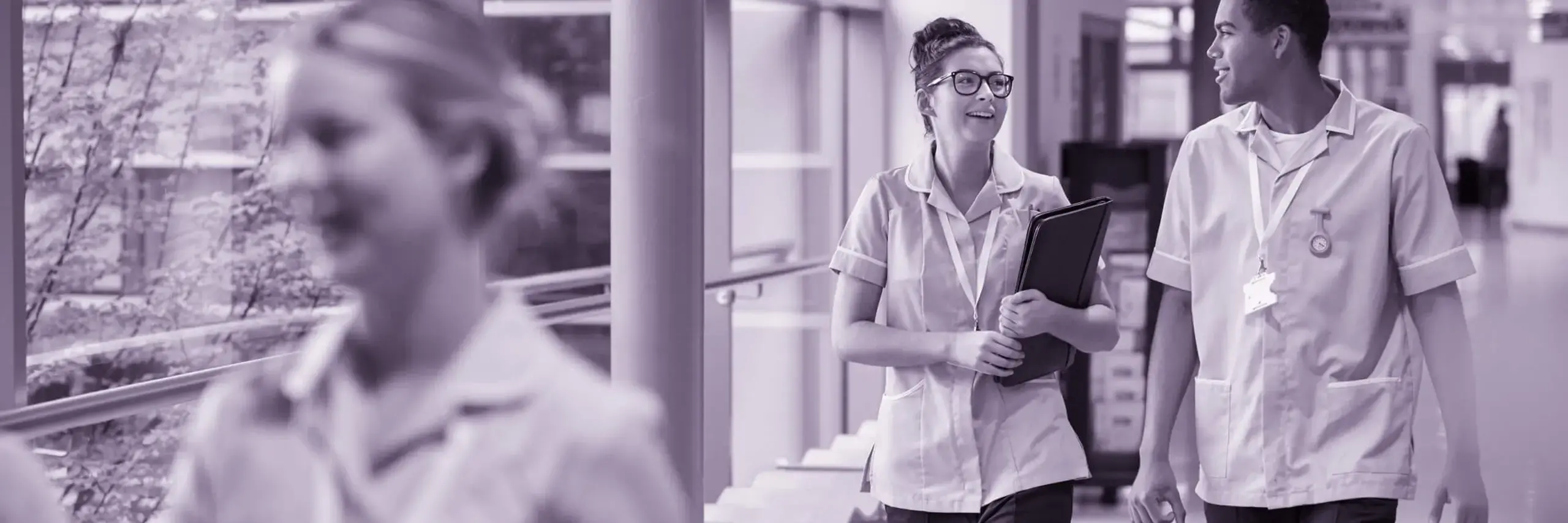Main content
Cultural Safety – seeking to turn the tide of health inequities in Aotearoa New Zealand
06 Jan 2023
Our report Safer care for all launched at a Parliamentary reception on 6 September. It highlights some of the biggest challenges affecting the quality and safety of health and social care across the UK today.
We want Safer care for all to start a debate on the issues highlighted and recommendations we have put forward in the report. As part of this debate, we are publishing a series of guest blogs written by stakeholders from across the sector. This blog is from Joan Simeon, Kiri Rikihana, Richard Tankersley, Jane Dancer, at The Medical Council of New Zealand.
Aotearoa New Zealand is hailed as a leader in positive relationships between its indigenous Māori people and the New Zealand government. Some would debate this; however, where this is true the common ground is hard won, and compromises in the name of progress have been made on both sides. Where it is not true, it is because the social and health inequities experienced by Māori whānau (families) and communities persist.
Māori constitute 16.5% of Aotearoa New Zealand’s population of 5 million and most of the Māori population is aged under 35. Poor health outcomes, and unfair and unjust disparities in access to healthcare, employment, and housing, stifle the potential of Māori communities to flourish.
Health regulators have a unique place in supporting health equity by promoting and evolving the practice of cultural safety.
Since 2015, Te Kaunihera Rata o Aotearoa | Medical Council of New Zealand ('Council') noted that the causes of health inequity, and the links with poor health outcomes, were well evidenced. Moreover, inequities could be improved or avoided through a coordinated approach by training and health providers and policymakers.
In Council’s 2015 discussion paper, we set out that while the causes of health inequity are complex, there are some aspects of inequity where the regulator or medical profession has significant control or influence, and therefore we have a responsibility to act. As the medical regulator we have a responsibility to support and strengthen cultural competence, improve cultural safety, and more importantly work towards better health outcomes for Māori.
Off the back of this early work, two aspects of health policy are becoming established in the regulation of health professionals in Aotearoa New Zealand. The first is recognising Te Tiriti o Waitangi – the 1840 founding document for Aotearoa New Zealand signed between the British Crown and Māori iwi (tribes).
The second is embedding the practice of cultural safety into accreditation standards across the medical education continuum – which reflects the recognition of cultural safety as a core element of patient safety throughout the health sector.
Te Tiriti o Waitangi
A sea change has taken place in the last 30 years. We recognise the unique importance of Māori culture and values, and the necessary decision-making role that iwi (tribal) groups should have in health and social services – a recognition, in part, of the agreement made under Te Tiriti o Waitangi. In 2019 the Waitangi Tribunal produced the Hauora (Health and Wellbeing) report on breaches of Te Tiriti o Waitangi in the primary health sector. It reported five principles that should be used in the design and delivery of health services.
These principles are now beginning to be included into legislation, strategic planning, and operational service delivery. For example, the Health Practitioners Competence Assurance Act 2003 already requires that responsible authorities address the needs of Māori people, and in doing so the Medical Council of New Zealand is supporting the principle of equity by examining and redesigning our regulatory system (including quality improvement, notification, governance, and data systems) to support more equitable outcomes for Māori. This progresses opportunities for more equitable outcomes to develop for all and advances a more culturally safe regulatory system.
The Treaty of Waitangi Principles derived from WAI 2575
Tino rangatiratanga: The guarantee of tino rangatiratanga, which provides for Māori self-determination and mana motuhake in the design, delivery, and monitoring of health and disability services.
Equity: The principle of equity, which requires the Crown to commit to achieving equitable health outcomes for Māori.
Active protection: The principle of active protection, which requires the Crown to act, to the fullest extent practicable, to achieve equitable health outcomes for Māori. This includes ensuring that it, its agents, and its Treaty partner are well informed on the extent, and nature, of both Māori health outcomes and efforts to achieve Māori health equity.
Options: The principle of options, which requires the Crown to provide for and properly resource kaupapa Māori health and disability services. Furthermore, the Crown is obliged to ensure that all health and disability services are provided in a culturally appropriate way that recognises and supports the expression of hauora Māori models of care.
Partnership: The principle of partnership, which requires the Crown and Māori to work in partnership in the governance, design, delivery, and monitoring of health and disability services. Māori must be co-designers, with the Crown, of the primary health system for Māori.
Cultural safety
“Cultural safety requires health practitioners to examine themselves and the potential impact of their own culture on clinical interactions. This requires health providers to question their own biases, attitudes, assumptions, stereotypes and prejudices that may be contributing to a lower quality of healthcare for some patients. In contrast to cultural competency, the focus of cultural safety moves to the culture of the clinician or the clinical environment rather than the culture of the ‘exotic other’ patient.” Curtis, E., Jones, R., Tipene-Leach, D. et al, 2019
Curtis, E., Jones, R., Tipene-Leach, D. et al. Why cultural safety rather than cultural competency is required to achieve health equity: a literature review and recommended definition. Int J Equity Health 18, 174 (2019).
The term cultural safety was coined by nurse academic and practitioner Irihapeti Ramsden, ONZM 1946- 2003.
“Cultural Safety is therefore about the nurse rather than the patient. That is, the enactment of Cultural Safety is about the nurse while, for the consumer, Cultural Safety is a mechanism which allows the recipient of care to say whether or not the service is safe for them to approach and use. Safety is a subjective word deliberately chosen to give the power to the consumer”.
Council considers that as a medical regulator, it has a key role in cultural safety and health equity. This is demonstrated with one of our key strategic directions (known as pou or pillars) focused on the promotion of equity of health outcomes. We intend that we will see an improvement in the experience of cultural safety amongst Māori receiving health services from doctors. We will also see an increased support for Pasifika and disabled people and in time a more diverse and inclusive medical workforce.
Our statement on cultural safety sets standards that all doctors must adhere to. In addition, Council uses its regulatory levers in setting accreditation standards across the medical education continuum, from medical school, through prevocational medical training, vocational training and continual professional development programmes, to ensure there is a focus on cultural safety and health equity in all training and education programmes. The accreditation standards also focus on steps to encourage Māori trainees into training programmes and to support them once they are there, such as actively monitoring cultural loading and providing appropriate pastoral care.
We have captured baseline data about the state of cultural safety for patients, as delivered by doctors in a report called Cultural Baseline Safety Data Report - October 2020 that will be used for future evaluation and to help Council consider if it is achieving the goal, it set out.
This recognises that cultural safety theory and practice is central to the quality and safety of a doctor’s practice. Whether a doctor is successful or not in their cultural safety practice is in the “eye of the beholder” (the patient) or reflected in the comfort of the patient and their family.
The practice of cultural safety can be demonstrated by the following examples:
- A surgical team taking time before the surgery proceeds for the patient’s adult son to lead the group in a karakia /wayclearing prayer to settle the patient.
- A doctor recognising and acknowledging a patient’s cultural need to schedule breast cancer surgery at a time that aligns with her practice of following the maramataka (Lunar calendar).
- A health professional using indigenous introduction methods (where are your people from? how are we connected?) to build rapport and trust with the patient and their whānau (family) before a consultation begins.
- Non-indigenous and indigenous doctors speaking up against institutional racism and championing system change within their institution toward an anti-racist system.
These examples speak to a clinician’s insight and knowledge about their own power relationships as a clinician and to overtly acknowledge the patient’s culture and world view.
The historical dominance of the medical paradigm is no longer the only factor in the clinical relationship – and there is now space for the patient’s values. An important addition is that systematic fairness can be at the centre of the clinical conversation, therefore reducing bias and the perpetuation of inequities.



